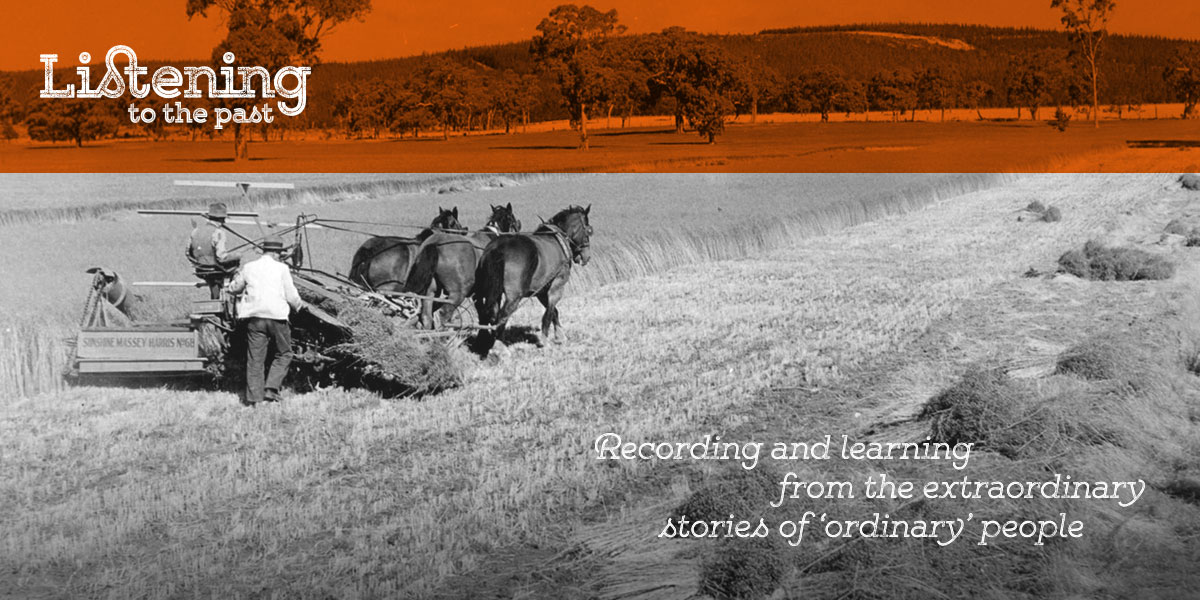The previous post described the cottages in the village – known as the Patch – at the Belconnen Naval Transmitting Station, and the challenges of keeping them warm in Canberra winters. This time, former residents talk about their memories of the gardens, children’s games and the social life.

The backyards
The weatherboard houses in the Patch had very large, grassed back gardens, many with fruit trees. The front garden was small and bordered by a hedge.
Cyril ‘Doc’ Rice recalled that in the early 1960s:
It had a garden there, we grew strawberries, and they had peach trees, nectarine trees, apple trees, and I think a persimmon tree. And of course a flower garden, you’ve got to grow your little flowers, I suppose. But it was quite a sort of suburban-type atmosphere.”
Mike Witcher remembered:
We had inherited a number of fowls from someone drafting out so had a chook run in the backyard. During winter a kettle had to be boiled to pour the water over the chooks’ water bowl to thaw out the ice that formed there.
In the early days the houses had clothes lines with wooden posts and cross arms at each end. The high power, low frequency transmitter induced quite a voltage into the clothes lines, so washing could only be hung out or brought in when the transmitter shut down on Tuesday and Thursday mornings. In our era we had the Hills Hoist clothes-line and the metal parts of the fence were grounded so we didn’t have that problem.”

A great place for children
Children made their own fun. The Patch was built on sloping ground, so the cottages had space underneath for cubby houses. Children rolled down the hill in the garden inside a basket, or slid down on a piece of cardboard. Marjorie Town’s children had a rope and tyre swing attached to one of the trees in their backyard. Some played hide-and-seek in the D-shaped park near the Officer-in-Charge’s house, but others recall it was “too creepy” and only went there at Christmas.
Colin ‘Gabby’ Hayes recalled what it was like for the children living on the Patch:
[There was a] big yard for the kids to run around in and very safe place for kids to play because, you know, we were all sort of family around that neighbourhood. There was only a small amount of cottages on the Patch, so all the kids used to get on – well, most of the folks used to get on with each other – there was the odd little tiff now and again. But yeah, it was a great place to live.”
An active social life
The isolation of the naval base, and the small number of people living there, created a close-knit community.

Doug Timmins remembered that as a single man living in the Patch in the 1950s:
We had quite a good social life in the village itself… there was hardly a Saturday night would go by without somebody in their married quarters cottage would have a party. So we had our share of parties there at Belconnen.”
Likewise, Gabby Hayes remembered:
When you live in a married patch in the Navy everybody knows each other, in the main you know each other’s business. There’s lots of social activities, it’s not far to go to a party, it’s next door, you don’t have to drive anywhere.”
A great environment
Gordon McDermott summed up what a wonderful place it was to live in:
We all loved it, you know. It was a great environment. Everybody got on well with everybody else. We made our own fun. TV in those days wasn’t the favourite pastime for us; it was just getting together in the recreation hall having a few drinks, playing darts or whatever, or playing cricket during the weekend. It was a fantastic time.”

Demise of the Patch
By the 1980s the majority of people lived in the surrounding suburbs rather than in the Patch. Some cottages started to be used for other purposes. Training Ship (TS) Canberra, for Naval Cadets, was based in cottage 17 for example. The cottages were demolished in 1989, and sadly there are few physical remains of the once vibrant Patch, whose residents undertook such important work.
You can read more about the history of the Belconnen Naval Transmitting Station here.
Acknowledgements
Extract from oral history interviews with Colin ‘Gabby’ Hayes, Gordon McDermott, Cyril ‘Doc’ Rice, Doug Timmins, and Marjorie Town used with the permission of the Australian Government Department of Defence.
Recollections of Mike Witcher used with his permission.
